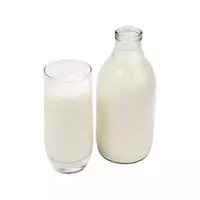Pasteurized milk

It is best, undoubtedly, to purchase and consume full-fledged village milk cow milk, but not all people have such an opportunity. The vast majority of people face a choice that is limited mainly to 2 options: pasteurized milk and sterilized milk.
The shelf life of pasteurized milk is only a few days and on sale it can be found most often in soft bags, and as for the sterilized product, it can remain fresh for up to six months and is sold in solid packages.
The term "pasteurization" appeared back in the mid-19th century, when this technology was proposed by Louis Pasteur, a French microbiologist. The point of pasteurization is to heat liquid products alone to a temperature of 60 degrees for 1 hour or to a temperature of 80 degrees for half an hour.
With this type of treatment, vegetative forms of microorganisms die in milk, but their spores remain viable and, in the presence of favorable conditions, begin to actively develop. Therefore, pasteurized milk should be stored at a reduced temperature for a certain time. It is believed that the nutritional value of milk after pasteurization remains practically unchanged, since the valuable components and taste qualities are preserved.
pasteurized milk 62 kCal
Energy value of pasteurized milk (Ratio of proteins, fats, carbohydrates - ju):
Proteins: 2.9 g (~ 12 kCal)
Fats: 3.5 g (~ 32 kCal)
Carbohydrates: 4.7 g (~ 19 kCal)
Energy ratio (b | y): 19% | 51% | 30%
 Español
Español Français
Français Português
Português Русский
Русский 简体中文
简体中文 繁體中文
繁體中文 日本語
日本語 한국어
한국어 العربية
العربية Türkçe
Türkçe Қазақ
Қазақ Deutsch
Deutsch Italiano
Italiano Українська
Українська
